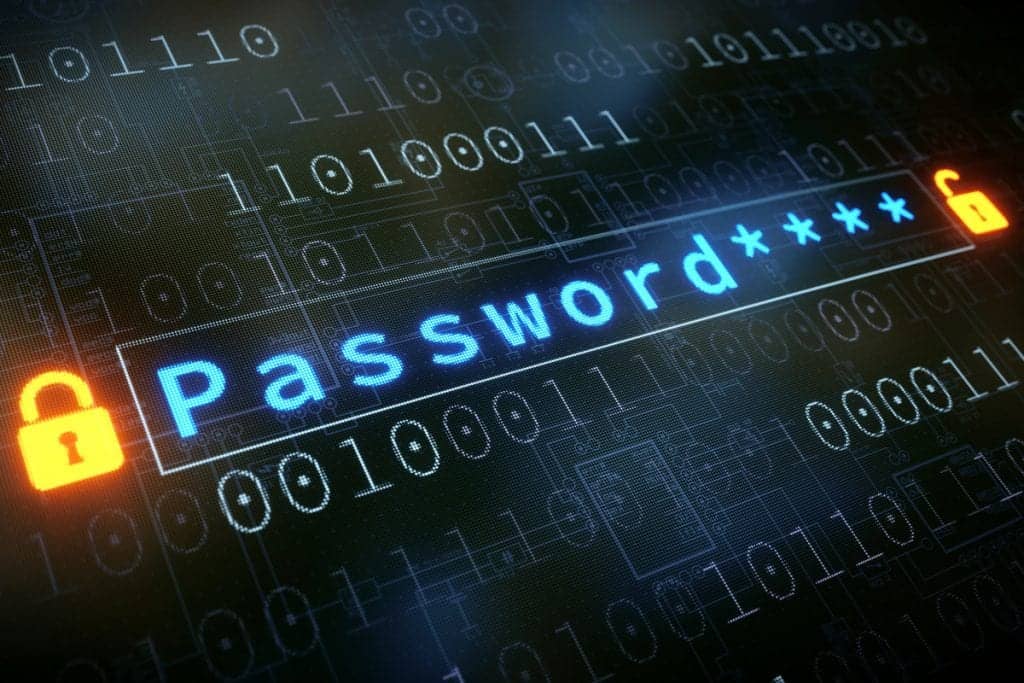Your company’s sensitive data—like employee credentials, client information, and financial records—is constantly at risk of exposure. That exposure can happen in many ways: through phishing attacks, malware, weak passwords, or even a misconfigured cloud service.
But not all data breaches are immediately visible. In many cases, the real danger begins when stolen information ends up on the dark web—a hidden part of the internet where cybercriminals buy, sell, and trade compromised data.
This is often the first sign that your business has been breached, and it may happen long before you’re aware anything is wrong.
⚠️ The consequences can be severe: financial losses, reputational damage, and operational disruptions that many small businesses struggle to recover from.
That’s where dark web monitoring comes in.
It acts as an early warning system, alerting you when your business credentials appear in underground marketplaces—giving you a critical opportunity to respond before attackers can exploit the data.
Protect your business before it’s too late—contact our cybersecurity support team to set up dark web monitoring and safeguard your sensitive data.
What is dark web monitoring?
Dark web monitoring is the continuous scanning of hidden online forums, marketplaces, and data dumps to detect exposed credentials and sensitive business information. Unlike traditional security tools that only protect your network perimeter, dark web monitoring actively searches for signs that your data has already been compromised.
At CMIT Solutions, we help clients identify early indicators of compromise by constantly scanning these hidden corners of the internet where hackers trade stolen information.
💡According to the Cybersecurity & Infrastructure Security Agency (CISA), early detection of credential theft is critical to preventing larger security incidents.
How does dark web monitoring work?
Dark web monitoring works by deploying specialized crawlers and scanners that continuously search hidden networks for specific information patterns related to your business. This includes email domains, usernames, passwords, and other identifiers unique to your organization.
When these tools detect a match, they trigger an alert system that notifies your security team so you can take immediate action to mitigate potential damage.
| Action | Timing | Vulnerability Window | Business Impact |
|---|---|---|---|
| Dark web monitoring (real-time or continuous) | Ongoing (near real-time) | Hours or less | 🔒 Minimal — early alerts allow for immediate password resets and containment |
| Periodic manual scanning | Weekly or monthly | Days to weeks | ⚠️ Moderate — delays in detection may result in exposed accounts being exploited |
| No monitoring | None | Indefinite | 🚨 Severe — breaches often go undetected until significant damage is done |
What is a dark web alert?
A dark web alert is a notification that your company’s data—such as employee email addresses, customer information, or proprietary data—has been detected on illicit marketplaces or forums. These alerts serve as an early warning system, allowing you to reset passwords and strengthen security before attackers can exploit the leaked information.
💡 The timing of these alerts is critical—organizations that respond within the first 24 hours of credential exposure can reduce the risk of account takeover by up to 70%, according to security researchers.
Don’t wait until your data is already in the wrong hands—get started with dark web monitoring today to protect your business from hidden threats.
Dark web monitoring tools explained
Different dark web monitoring solutions offer varying capabilities depending on your business size and security needs:
- Credential monitoring platforms: Track exposed usernames and passwords across hidden forums and marketplaces, providing immediate alerts when matches are found.
- Identity threat intelligence services: Monitor broader data types beyond credentials, including mentions of your company, executives, or specific business identifiers.
- Integration-ready APIs: Allow managed service providers to incorporate dark web monitoring into comprehensive security solutions for seamless threat management.
📌 Small and medium businesses should prioritize tools that provide both credential monitoring and domain mention alerts to get comprehensive coverage without overwhelming their IT resources.
Dark web monitoring solution comparison
| Feature | Free Monitoring Tools | Paid Business Solutions | CMIT Solutions Managed Approach |
|---|---|---|---|
| Coverage Scope | Limited to major breach databases | Multiple dark web sources and forums | Comprehensive monitoring across dark web, paste sites, and private forums |
| Alert Speed | Delayed (often days or weeks) | Same-day alerts | Real-time alerts with immediate notification |
| Data Types Monitored | Email addresses only | Credentials and limited business identifiers | Full credential sets, domain mentions, executive names, and proprietary information |
| Response Support | None – alerts only | Basic guidance documentation | Complete remediation assistance and security improvements |
| Ongoing Protection | Manual checks only | Automated scanning | Continuous monitoring with expert analysis |
| Integration | Standalone tool | Limited API connections | Fully integrated with broader security ecosystem |
| Reporting | Basic breach notification | Standard reports | Customized intelligence reporting with actionable recommendations |
| Human Intelligence | None | Limited | Expert analysis of threats and personalized recommendations |
Want to know which dark web monitoring tools are right for your business? Contact us today for expert guidance and tailored cybersecurity solutions
Dark web intelligence: what it reveals
Dark web intelligence provides more than just alerts—it delivers actionable insights into the broader threat landscape facing your organization. This includes:
- Discussions about potential targets in hacker forums
- Leaked database contents containing your business information
- Compromised vendor credentials that could affect your supply chain
- Phishing kits specifically designed to target your employees or customers
⚖️ Our threat monitoring practices align with the same intelligence frameworks used by enterprise security teams, scaled appropriately for small and medium businesses.
💡The FBI Internet Crime Complaint Center (IC3) reported over $10.3 billion in losses from cybercrime in 2023, with business email compromise and credential theft among the leading attack vectors.
Dark web scanning vs monitoring
Many business owners confuse dark web scanning with monitoring, but they serve fundamentally different security functions:
Dark web scanning performs point-in-time checks for exposed credentials or company information. Think of it as taking a snapshot of your current exposure. While useful, these periodic scans can miss newly leaked data that appears between scanning intervals.
In contrast, dark web monitoring provides continuous, real-time surveillance of underground marketplaces and forums. This ongoing vigilance ensures that new threats are detected promptly, giving your security team the ability to respond before damage occurs.
💡 Even monthly scanning can leave your business vulnerable for weeks if credentials are leaked shortly after a scan occurs. Continuous monitoring closes this dangerous security gap by providing near-real-time alerts.
What to expect from dark web monitoring services for businesses
A comprehensive dark web monitoring service for your business from us will include:
- Continuous scanning for compromised credentials across the dark web
- Customized alerts based on your organization’s risk profile
- Regular reporting on potential exposures and remediation steps
- Guidance on password reset protocols and security improvements
- Integration with your broader cybersecurity strategy
At CMIT Solutions, we don’t just alert you to potential compromises—we help implement the necessary security changes to protect your business. Our approach combines monitoring technology with hands-on expertise to address threats before they impact your operations.
Want to learn how proactive protection fits into a trusted IT partnership? Download our free guide: Cybersecurity & the Trusted Advisor.
Is dark web monitoring worth it?
For businesses concerned about data security and regulatory compliance, dark web monitoring provides substantial value that far outweighs its cost.
According to IBM’s 2024 Cost of a Data Breach Report, organizations with fewer than 500 employees face an average breach cost of $3.31 million—up 13.4% from the previous year—making early detection through dark web monitoring a smart and essential investment.
✔️ Dark web monitoring delivers concrete business benefits including:
- Early warning of potential credential compromise
- Proof of security due diligence for cyber insurance requirements
- Compliance support for regulations requiring breach notification
- Reduced incident response costs through early detection
Hypothetical Scenario: An employee who left your company six months ago had their personal email and password exposed in a data breach.
Because they reused their password for your systems, attackers now have a potential entry point to your network. Without monitoring, you might never know until after a breach occurs—or even think to ask, how do I know if my email has been hacked.
Not sure if dark web monitoring is right for your business? Talk to our team to see how it can protect your data and reduce your risk.
How to respond to a dark web alert
If you receive an alert that your business data has been exposed on the dark web:
- Immediately reset passwords for any compromised accounts and implement multi-factor authentication where possible.
- Check access logs for the affected accounts to identify any unusual activity or unauthorized access attempts.
- Notify your IT security team or provider to conduct a broader assessment of potentially affected systems.
- Review and update your security policies to prevent similar exposures, including strengthening password requirements and BYOD security practices.
📌 Document all steps taken in response to the alert—this information may be vital for compliance reporting or cyber insurance claims if an actual breach occurred.
Trust CMIT Solutions to protect your business from dark web activity
Your business deserves enterprise-grade protection without the enterprise-level complexity or cost. At CMIT Solutions, we provide dark web monitoring as part of our comprehensive cybersecurity approach, combining advanced threat detection with practical, hands-on support.
Our experienced cybersecurity experts can help you implement dark web monitoring and develop a complete security strategy tailored to your business needs. Contact us today at (800) 399-2648 or online to schedule a consultation.
FAQs
Can I remove my information from the dark web?
Once your information appears on the dark web, it typically cannot be completely removed or deleted. The priority should be changing compromised credentials immediately and implementing stronger security measures to prevent further exposure.
After credentials are leaked, your focus should shift to mitigation: resetting passwords, implementing multi-factor authentication, and monitoring for suspicious activity. Working with a managed IT provider can help you respond effectively and strengthen your security posture.
How do I know if I am on the dark web?
Without specialized monitoring tools, you typically won’t know if your information is on the dark web until it’s used in an attack against you. Professional dark web monitoring services actively search for your business credentials and notify you when they’re detected.
⚠️ By the time you notice unusual account activity or unauthorized access, attackers may have already had access to your systems for days or weeks. Proactive monitoring is essential for early detection.
Should I worry if my info is on the dark web?
Yes, finding your business information on the dark web is cause for immediate concern and action. Exposed credentials are frequently used for account takeovers, business email compromise, and more sophisticated attacks targeting your organization.
The presence of your data on dark web marketplaces indicates that criminals already have access to some of your information and may be actively planning to exploit it. Immediate password changes, security reviews, and enhanced monitoring are essential steps to take when exposure is detected.
Can dark web monitoring prevent identity theft before it happens?
Dark web monitoring can help prevent identity theft by alerting you when credentials are exposed but before they’re used in an attack. This early warning gives you time to change passwords and strengthen security before criminals can exploit the information.
While monitoring alone can’t prevent the initial data exposure, it creates an important window for response between when credentials are leaked and when attackers attempt to use them. For businesses, this can be the difference between a simple password reset and a full-scale data breach.
What should I do if a former employee’s login is found in a dark web alert?
If a former employee’s credentials appear in a dark web alert, take immediate action by checking whether their account still has access to your systems, deactivating any remaining access, and reviewing activity logs for signs of unauthorized use.
You should also verify that proper offboarding procedures were followed when they left and consider conducting a broader review of your user account management processes. Many companies find that implementing automated offboarding workflows helps prevent these security gaps.
Does dark web monitoring work for small businesses with limited IT resources?
Yes, dark web monitoring is especially valuable for small businesses with limited IT resources as it provides automated threat detection without requiring dedicated security staff. Working with a managed IT provider makes this protection even more accessible.
Small businesses can implement dark web monitoring through managed service providers like CMIT Solutions, who handle the technical aspects of monitoring while providing guidance on responding to alerts. This approach gives small businesses enterprise-level protection without the need for specialized in-house expertise or expensive security infrastructure.






